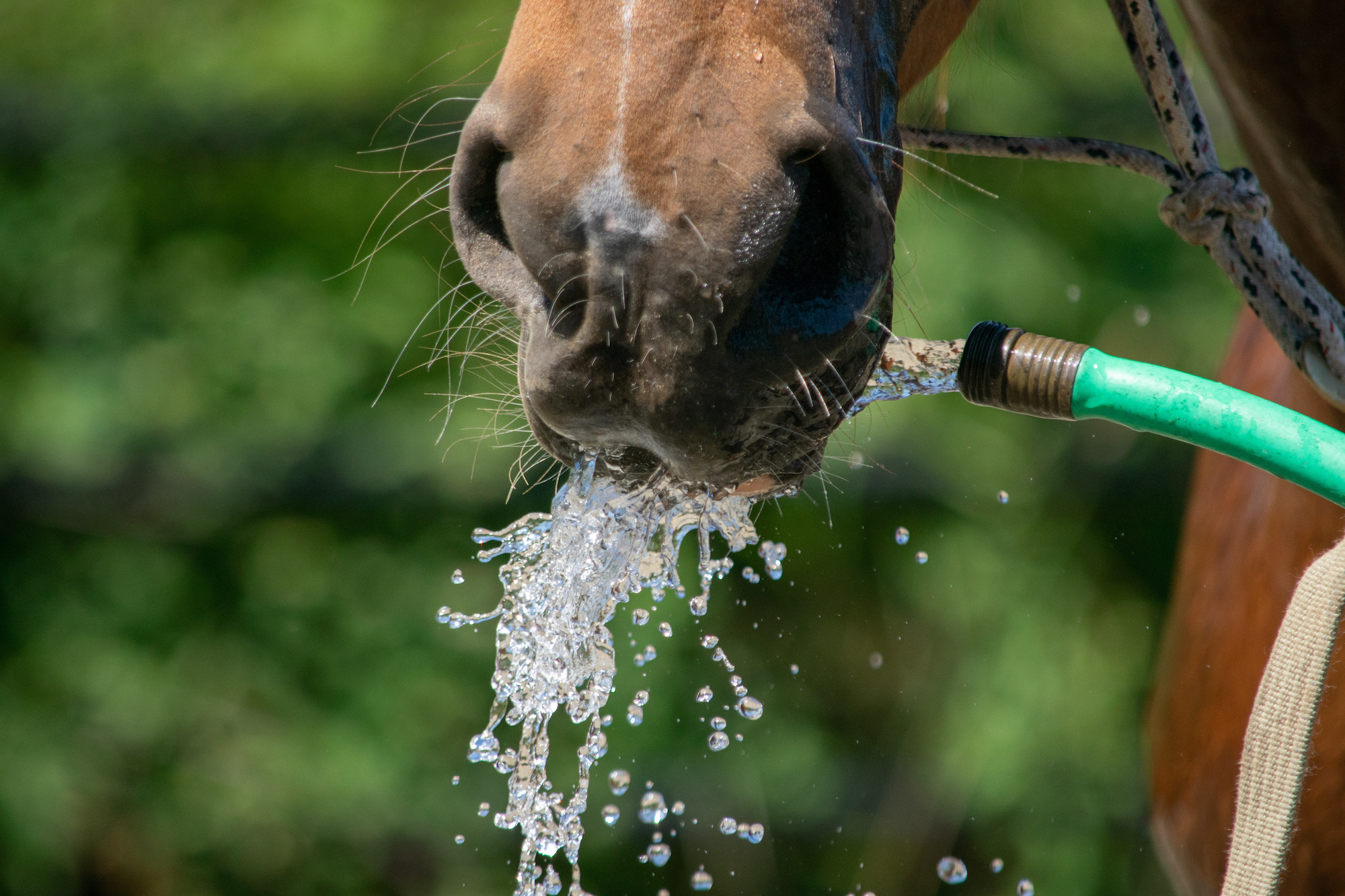by Sandra Burnett, RN & Independent BEMER Distributor.
No matter where in the United States you live, summer days can sometimes be excruciatingly hot. And while fun in the sun is great for humans, it can be deadly for horses if you aren’t vigilant about their welfare. Your horse’s skin contains sweat glands that help keep him cool. As the horse heats up, capillaries in the skin dilate to expel the heat generated by the muscles. When the capillaries can no longer keep up, the horse starts to sweat, which helps to release the heat.
Here’s how to protect your horse during the hot months and ensure his days are as pleasant as yours should be. Remember, you can also hire a pet first aid trainer to assist you with pet safety preparation for your horse.
1. Provide Shelter
Giving your horse shelter from the direct heat of the sun is the most important thing you can do to protect him. Horses can develop dehydration, exhaustion, and heatstroke, and these can cause severe illness or even death. Make sure the horse has shade to rest in when you aren’t riding. Keep trailers well-ventilated during travel and avoid leaving horses in a parked trailer, especially if there’s no shade available. Temperatures in a trailer can quickly climb up to 140 degrees, which will cause the horse to develop heatstroke in a very short time. Foals are even more susceptible to the heat than adult horses, so consider the age of the horse you’re transporting.
2. Offer Respite from the Heat
Horses can only take a few hours of activity during the hottest part of the day. Therefore, take care to keep your rides brief during these times and allow for frequent breaks during long trails. Work with competition organizers to reschedule any classes when the temperature soars and try to do the bulk of your activity during the cooler morning and late afternoon hours. This will give your horse the rest and respite he needs to deliver his best performance when you need him to do so.
3. Avoid Dehydration
Make sure you have cool, clean water freely available for your horse at all times, especially during a trail or after a class at a show. It’s not true that a hot horse shouldn’t drink water—that only applies if he has been without water for many hours or days. In that case, provide water in small amounts over a period of time. If your horse doesn’t want to drink, offer him some hay and see if that will encourage him to drink after eating it. Other ways of getting your horse rehydrated are to offer soup-consistency bran or pellet mash.
4. Set Up Cooling Options
During a heatwave, these basic steps might not be enough to keep horses comfortable and safe. You can set up additional cooling options such as:
• Open the windows: Good ventilation is vital in any indoor horse facility, so take care to open the windows and ensure that there’s another one opposite that you can open for a cross-breeze. This will help to keep the air moving during the heat.
• Electric fans: If your horse needs to spend any time in a barn or stable, set up a fan in front of his stall or in the aisle to provide extra air circulation. Take care to keep the electrical cords out of reach and away from any water that could cause a short circuit.
• Wet him down: Pour lukewarm or cool water over the horse from a hose or bucket to lower his body temperature quickly. For a horse suffering from heatstroke, continuous hosing can help him to recover faster.
• Replace electrolytes: A horse that has been sweating excessively may have lost electrolytes and benefit from replacement of them. Use electrolytes made specifically for horses, and make sure he has water to drink after taking them.
While none of these options are flawless, a combination of them will help defend your horse against the heat and avoid taking him to the next stage of heatstroke.
5. Watch Out for Symptoms
Learn the signs of fatigue and overheating in your horse and put a stop to activities before heat exhaustion sets in. Some of the symptoms of heatstroke in horses include:
• Persistent rapid breathing or panting that doesn’t come down after 15 or 20 minutes.
• A change in attitude, lower energy levels, and lack of inclination to exercise.
• Dry mucus membranes in the horse’s mouth and a delay in blood returning to the gums when you press them.
• Lack of sounds from the horse’s gut. You should be able to hear gurgling sounds coming from both sides of the belly. A quiet gut is a warning to check for dehydration or exhaustion.
If you see any signs of dehydration or overheating, stop your horse’s activities immediately and get him to a shaded area where you can help cool him down.
6. Focus on Optimal Horse Health
Horses can withstand hot weather better if they are in peak physical condition. Microcirculation, which takes place in the tiniest blood vessels and isn’t visible with a naked eye, is essential for all-round good health. The horse’s blood supply carries nutrients throughout its body to support metabolic processes and remove waste products, playing a significant role in your horse’s health. Good nutrition, regular exercise, medical care, and alternative animal physical therapy can keep your horse in peak condition.
About the Author

Sandra Burnett is a holistic RN and Equestrian who works with people and pets, to teach them about the importance of microcirculation and PEMF. PEMF stands for Pulsed Electromagnetic Field. Devices that use PEMF technology for therapy produce electromagnetic fields with various waveforms and frequencies that stimulate healthy muscles in order to improve and facilitate muscle performance. BEMER is an FDA Class II cleared consumer medical device that’s easy-to-use, non-invasive, and is intended to stimulate healthy muscles.


